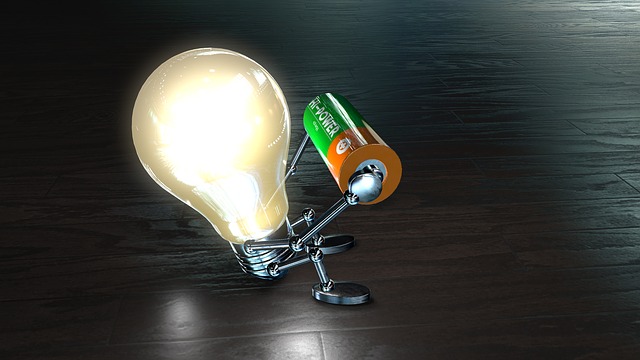Lithium Battery Construction-How to Make a Lithium Battery
Sep 02, 2019 Pageview:1287
A lot of struggles have been done on making the quality of lithium ion batteries better which is necessary to make vehicles viable. Researches are made on every component on the lithium ion batteries including finding the performance limits of these batteries. These batteries work on energy storage mechanism and are a rechargeable battery that takes comparatively less time to charge properly. Using these batteries in the vehicles is the better option and much money and energy-saving policy than using fossil fuel in the engine.
Process of lithium battery construction
If you know the process of construction of manufacturing Nickel Cadmium cells and Nickel Metal Hydride cells, it will be easy for you to understand the construction of lithium ion batteries because both of them work on the same scenario. The following steps are included in the construction of the lithium ion batteries:
· The electrode coating
· Assembling the cells
· Activation of the working materials
· Process control
After all this process, your lithium-ion battery will ready to use and can give you the advantages that you are looking for. Keep in mind! All these processes must be done in clean, safe and air-conditioned rooms because some of the cells may damage if they should face an excess of heat.
The following types of equipment are being used in the manufacturing of lithium-ions:
· Scanning electron microscope (SEM)
· Mechanical stress testing equipment
· Vibration tables
· Calorimeters
· Programmable charge/discharge cycle test equipment
· Mass spectrometer
Keep in mind! Cleanliness is much important if you wish to get rid of contamination.
How does lithium battery work?
Lithium-ion batteries are available in different types and sizes but all of them have the same composition and the way they work is the same.
· You can see the lithium-ion cells in the cylindrical form. These are prismatic and are almost similar to AA cells.
· There will be a temperature sensor in the system to calculate the temperature when you will charge your system through using the appropriate charger
· The notebook connector controls the flow of power from the pack of battery
· The voltage tap is necessary to measure the energy capacity of each cell of lithium ion battery
· The battery charge state monitor controls the overall process of charging. It also enables the battery to charge as soon as possible.
Never use the laptop if it gets too hot
Sometimes, the battery of the system gets too hot, in this situation, no way is better than shutting it down to let the system cool down. If you will continue to use it, it may damage the life span of the battery. Sometimes laptops shut down on their own and they will not allow you to use until they become cool.
Check the cell levels to track remaining battery
If the cells of the battery discharged somehow, the battery pack will shut down. These battery cells are the reminders that how many cells are left in the battery and for how long you should use it. These cells will keep track the number of charge and discharge cycles to let you know how much charging is left in your laptop
Most of the batteries have a metal case on the outer side. In this metal case, there is a vent hole that will discharge the extra pressure of a battery if it will ever become too hot or gain a lot of pressure. The use of the vent hole is considered as a safety measure. Positive Temperature Coefficient (PTC) switch is also fitted in the lithium ion batteries that will never allow the battery to overcharge.
In the metal case, there are three thin layers:
1.A Positive electrode
2.A Negative electrode
3.A separator
A separator separates the positive and negative electrodes of the battery to handle the overall performance of the battery well.
How to make a lithium battery?
1.Are you curious to know how to make a lithium ion battery? Our step by step guide can help you to get the answer to your question
2.Take the PCB and adjust the wires on them. Keep in mind! Before adjusting the wires, you must be aware of the specifications of the PCB and the protection voltage for every single cell of a lithium ion battery.
3.Adjust 16 cells in the battery that are the source to store the power in the battery. 18mm by 65mm are commonly used.
4.Use battery holders if you wish to remove the cells easily when they will get damage.
5.If you wish to keep the batteries safe and wish they should not shake apart, project box is preferable to use. The size of the project box depends on the size of a battery
6.Wiring the PCB and Balance Leads is the next step to make the battery work well
7.Balanced charging is necessary to apply. 4.2V will be perfect to apply for each cell.
8.After that, you must activate the PCB. it will become active automatically when you wired everything correctly
9.Keep on an eye on C rating which means you must know when your battery will reach to at appropriate capacity
10.Take the cells of higher voltages and swap them to the lower voltages
11.Try to follow all the precautionary measures to avoid your battery from heating up
Bottom line: how to make a better lithium ion battery?
The invention of the lithium ion batteries was done in the 1970s and until now, the struggles have been done to make advancements and developments in these batteries. When these were developed for the first time, it contained a lot of limitations but now these batteries are used in many applications and vehicles. Previously, expensive systems were used but now, due to the introduction of the lithium-ion batteries energy-effective systems are used in mobile devices and electric vehicles. Shortly, you will see the prominent decrease in the prices of lithium ion batteries. The time is not far when the lithium ion batteries will be introduced in most durable vehicles.
- Prev Article: Lithium Battery Composition-Electrodes, Electrolyte...
- Next Article: Lithium Battery Failure Rate-What You Need To Know?
Leave Message
Hottest Categories
-
Hottest Industry News
-
Latest Industry News











